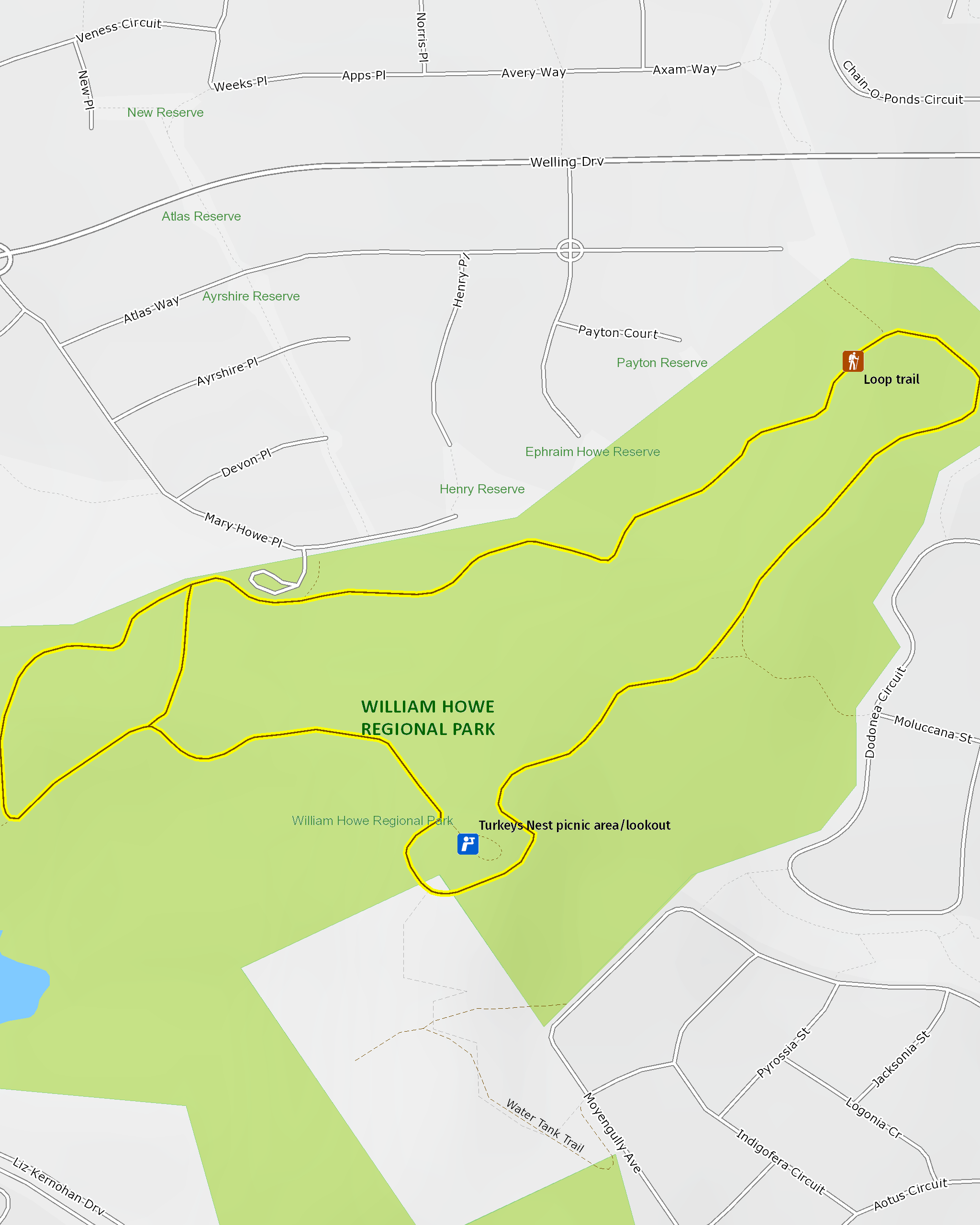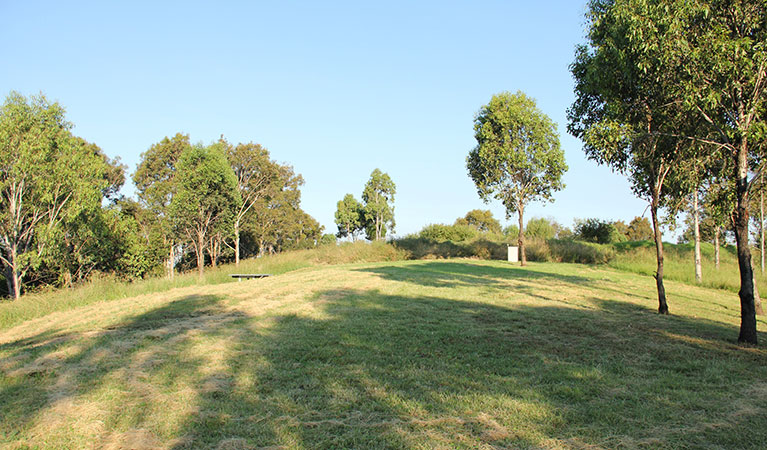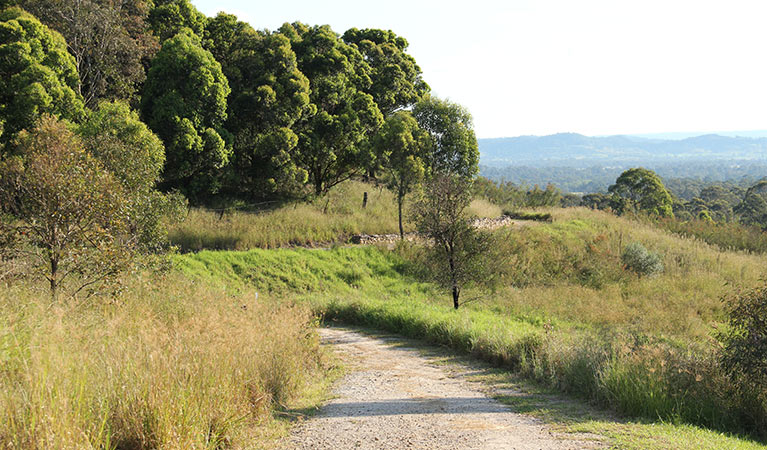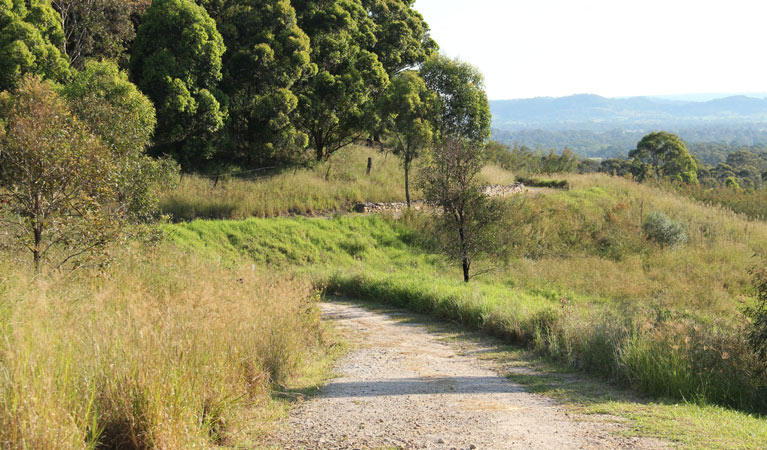Loop trail
William Howe Regional Park
Overview
Take your children and dogs out for a walk along the Loop trail in William Howe Regional Park. Stop at the lookout for scenic views and pack a picnic to enjoy.
- Distance
- 2.5km loop
- Time suggested
- 30min - 1hr
- Grade
- Grade 3
- What to
bring - Drinking water, hat, sunscreen
The Loop trail takes you on a varied and pretty stroll on a loop walk around William Howe Regional Park. You’ll see farmlands spreading across the Razorback Mountains and to the Blue Mountains escarpment in the distance and up on the hill you’ll pass Turkeys Nest lookout and picnic area, the highest point on the track and a great place to stop for a break or a picnic lunch.
From here, the walk heads into the trees, where you’ll forget how close you are to the suburbs as you lose yourself for a little while in nature. The Loop trail is a great walk for children, plus the park is dog-friendly, so you’re welcome to bring your dogs along, provided they’re on a leash.
Map

Map legend

Local alerts
For the latest updates on fires, closures and other alerts in this area, see https://uat.nswparks.cloud/things-to-do/walking-tracks/loop-trail/local-alerts
General enquiries
- National Parks Contact Centre
- 7am to 7pm daily
- 1300 072 757 (13000 PARKS) for the cost of a local call within Australia excluding mobiles
- parks.info@environment.nsw.gov.au
Park info
- in William Howe Regional Park in the Sydney and surrounds region
William Howe Regional Park is always open but may have to close at times due to poor weather or fire danger.
Visitor info
All the practical information you need to know about Loop trail.
Maps and downloads
Learn more
Loop trail is in William Howe Regional Park. Here are just some of the reasons why this park is special:
Ancient landscapes

William Howe Regional Park is within the traditional lands of the Sweet Water Dharawal Aboriginal People. The park's prominent and elevated setting was important for communication, camping and spotting animals. The park's landscapes features Aboriginal storylines and continues to be an important place for Aboriginal people today.
Extend your backyard

Situated at the end of several suburban streets, you can enjoy William Howe Regional Park any time you feel like a good dose of fresh air. Walk after work, take the kids for a ramble to burn off some energy, head out with your dogs or find a quiet spot to take time out from a busy day - you'll feel all the better for it.
Nature in the suburbs

Whether you're heading out for a run, a walk with the dog or a weekend picnic with the kids, it's great to have a local park where you can get back in touch with nature. Listen to the birds, check out the views and enjoy the feeling of space that comes with getting out and about in nature.
Plants and animals protected in this park
Animals
-

Brown-striped frog (Lymnastes peronii)
One of the most common frogs found in Australia, the ground-dwelling brown-striped frog lives in ponds, dams and swamps along the east coast. Also known as the striped marsh frog, this amphibian grows to 6.5cm across and has a distinctive ‘tok’ call that can be heard all year round.
-

Peron's tree frog (Litoria peroni)
Peron’s tree frog is found right across NSW. These tree-climbing and ground-dwelling Australian animals can quickly change colour, ranging from pale green-grey by day, to a reddish brown with emerald green flecks at night. The male frog has a drill-like call, which has been described as a 'maniacal cackle’.
-

Eastern blue-tongue lizard (Tiliqua scinciodes)
The eastern blue-tongue lizard, one of the largest skinks in Australia, is found throughout most of NSW. When threatened, the eastern blue-tongue lizard displays its blue tongue in a wide-mouthed intimidating show. Not an agile animal, they feed on slow-moving beetles and snails.
-
Cumberland Plain land snail (Meridolum corneovirens)
The endangered Cumberland Plain land snail is only found on the Cumberland Plain, west of Sydney. During drought it digs deep into the soil to escape harsh conditions. Its brown shell is thin and fragile.

